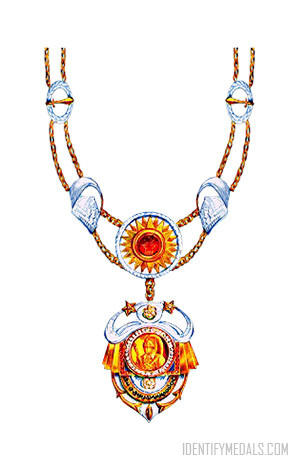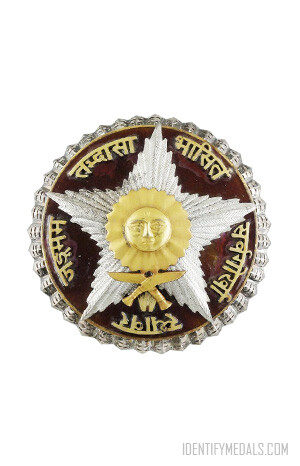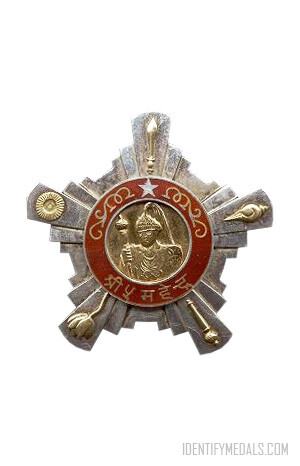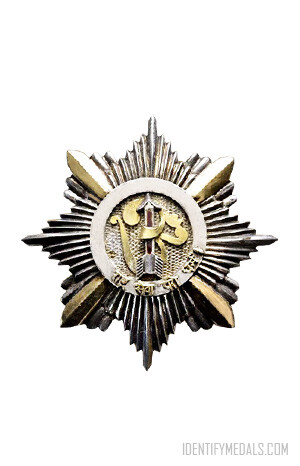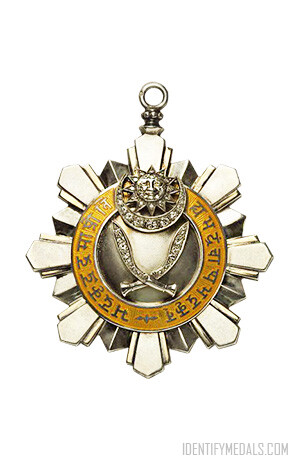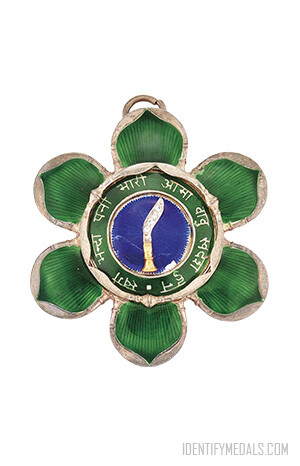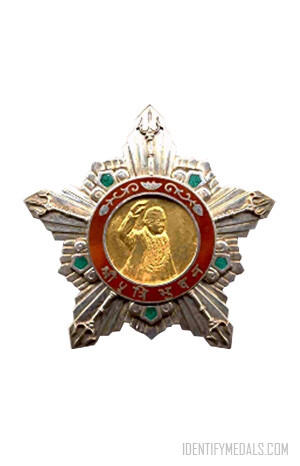The Most Glorious Mahendra Chain (or महेन्द्र माला मानपदवी Mahendra Mala Manapadvi in Nepali) is a prestigious royal decoration of Nepal.
Established on February 26, 1961, by King Mahendra Bir Bikram Shah Dev. The decoration was named in his honor, reflecting the monarch’s desire to recognize and honor significant contributions to the nation.
The medal is intended to honor reigning sovereigns, reflecting their paramount role and contributions to the state. It symbolizes the highest level of respect and recognition from the Nepalese monarchy, awarded for exceptional service and dedication to the nation.
The decoration is awarded in a single class, the Chain, and is exclusively conferred upon reigning sovereigns, making it one of the highest and most exclusive honors in the Nepalese system of awards and decorations.
The Most Glorious Mahendra Chain Design
The chain includes elements symbolizing the country’s heritage, monarchy, and national pride.
The Most Glorious Mahendra Chain Awardees
Queen Elizabeth II of the United Kingdom
Queen Elizabeth II, the longest-reigning British monarch, was awarded the Most Glorious Mahendra Chain as a symbol of the strong diplomatic and cultural ties between Nepal and the United Kingdom. Her Majesty’s reign has seen significant global changes and she has been a figure of stability and continuity in the Commonwealth. The honor bestowed upon her by King Mahendra reflects the mutual respect and long-standing relationship between the two countries, emphasizing cooperation and goodwill.
King Birendra
King Birendra Bir Bikram Shah Dev was the King of Nepal from 1972 until his tragic assassination in 2001. He is remembered for his efforts to modernize Nepal, maintain its non-aligned foreign policy, and uphold the traditions of the monarchy while responding to the changing political landscape. King Birendra’s reign saw significant social and economic developments in Nepal. The Most Glorious Mahendra Chain was awarded to him to honor his leadership and commitment to the nation’s progress and stability.
Queen Aishwarya
Queen Aishwarya Rajya Lakshmi Devi Shah, the consort of King Birendra, was also a recipient of the Most Glorious Mahendra Chain. She played a significant role in the cultural and social spheres of Nepal, advocating for various charitable causes and supporting the arts. Her efforts to preserve and promote Nepalese culture and traditions were recognized through this prestigious award, reflecting her contributions to the nation’s cultural heritage.
King Gyanendra
King Gyanendra Bir Bikram Shah Dev, the younger brother of King Birendra, ascended to the throne following the royal massacre in 2001. His reign was marked by significant political turmoil, including the transition from a monarchy to a federal democratic republic. Despite these challenges, King Gyanendra’s contribution to Nepal’s history and his role during a critical period of transition were acknowledged with the Most Glorious Mahendra Chain, honoring his service and dedication to the country.
Queen Komal
Queen Komal Rajya Lakshmi Devi Shah, the consort of King Gyanendra, was awarded the Most Glorious Mahendra Chain in recognition of her role and contributions as the queen. She supported various social and humanitarian efforts, focusing on health, education, and welfare. Queen Komal’s commitment to improving the lives of Nepalese citizens and her support for cultural initiatives were significant aspects of her public life, making her a deserving recipient of this royal decoration.

